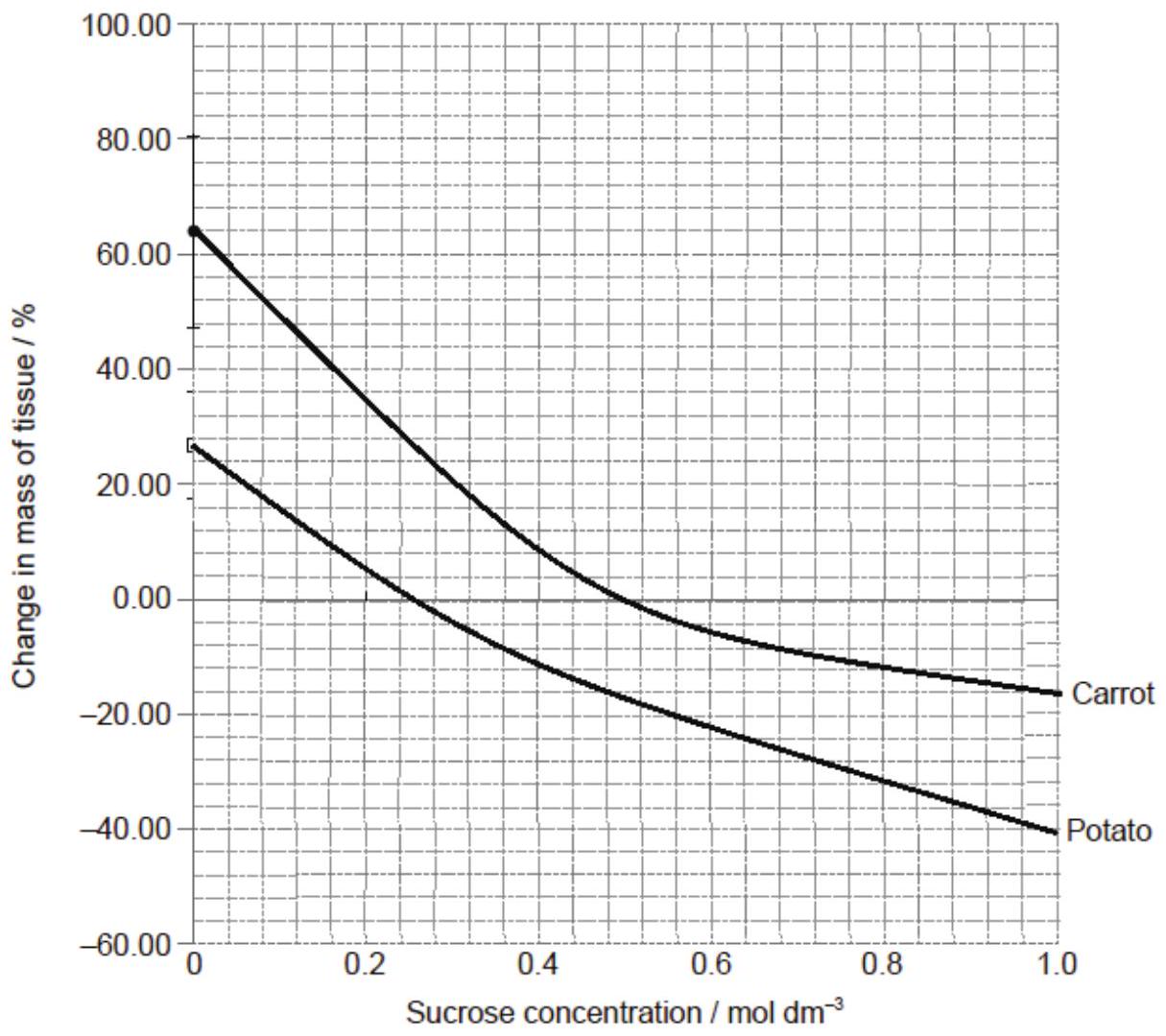An experiment was carried out on osmosis in carrot (Daucus carota) root tissue and potato (Solanum tuberosum) tuber tissue. Similar sized pieces of tissue were cut and soaked in different sucrose solutions for 24 hours. The results are shown in the graph below. 
Using the graph, estimate isotonic sucrose solutions for potato tissue and carrot tissue.
[2]potato: carrot:
Allow a range of Allow a range of (Allow 1 max if no units or either unit is omitted)
Suggest a reason for the difference in the isotonic points for the potato and the carrot tissues.
[1]different dissolved solutes/sugars/sucrose/salts/molarities OR may have been grown in different soils giving their tissues different contents OR may have been stored under different conditions OR may be more dehydrated / different water content OR different types of tissue / different age
Do not accept starch.
From the evidence provided by the graph, evaluate the reliability of these data.
[2]a. the data show clear trends OR a trend line could be drawn through these data OR there are no outliers
b. the error bars/standard deviations shown OR the error bars/standard deviations vary with concentration
c. sample size is unknown
Explain one reason for calculating the percentage change in mass.
[2]
